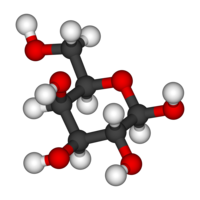
Photo from wikipedia
Green macroalgae, such as Ulva spp., has a higher growth rate than terrestrial lingocellulosic biomass, which often leads to serious environmental issues such as green tide. So, it is a… Click to show full abstract
Green macroalgae, such as Ulva spp., has a higher growth rate than terrestrial lingocellulosic biomass, which often leads to serious environmental issues such as green tide. So, it is a promising feedstock for biorefineries. Hiraoka produced Ulva with reproducible compositions and sizes by our original cultivation method. The macroalgae contained approximately 35 wt % of a soluble polysaccharide called ulvan, which is a sulfated glucuronorhamnan polysaccharide. The catalytic conversion of extracted ulvan was performed under hydrothermal conditions at 130 °C by using solid acid catalysts. The Amberlyst 70 catalyst has a stable structure and gave monosaccharides in quantitative yield, predominantly in the form of rhamnose. The Amberlyst 70 catalyst showed higher activity than sulfonated activated‐carbon (AC‐SO3H) in the hydrothermal conversion of ulvan, although Amberlyst 70 showed lower catalytic activity than AC‐SO3H in the hydrolysis of starch.
Journal Title: ChemCatChem
Year Published: 2017
Link to full text (if available)
Share on Social Media: Sign Up to like & get
recommendations!